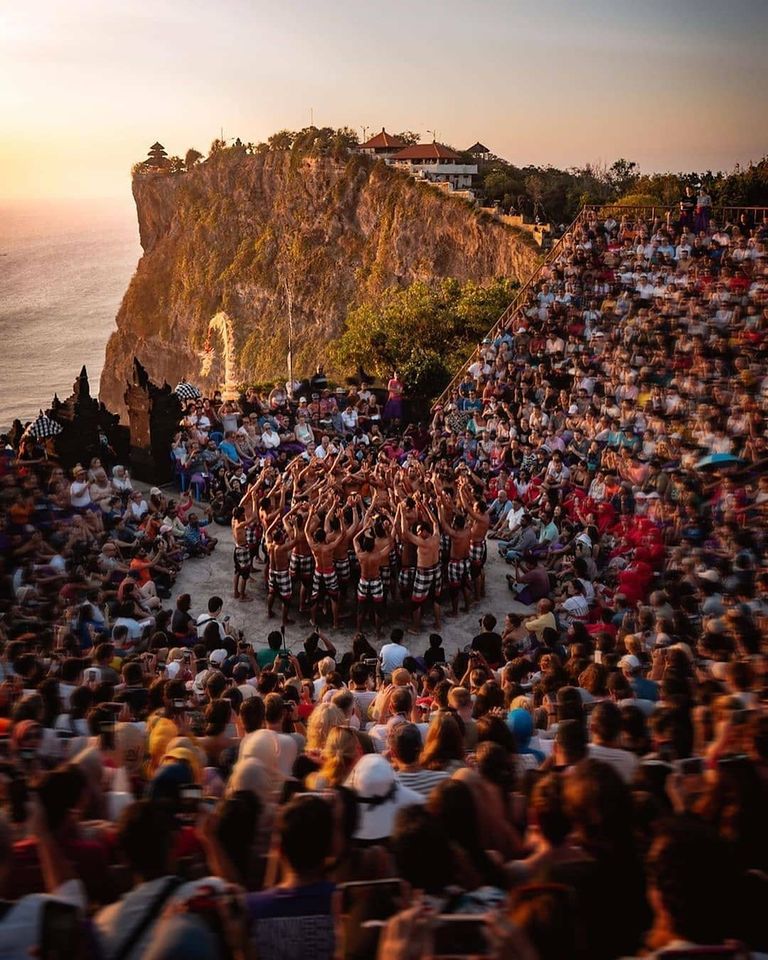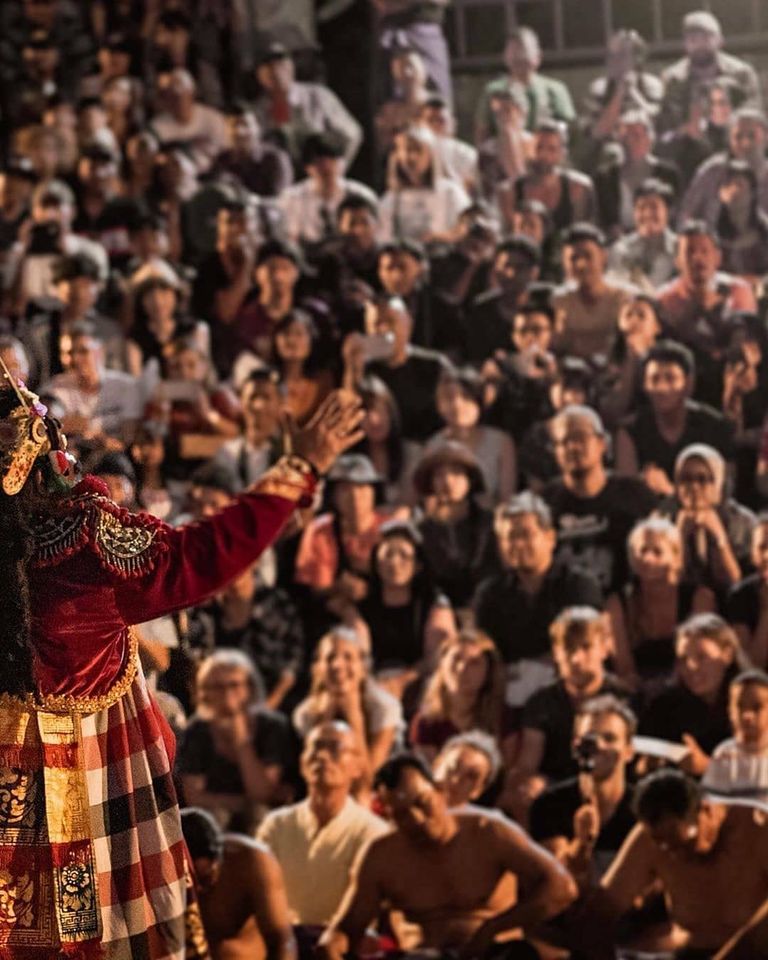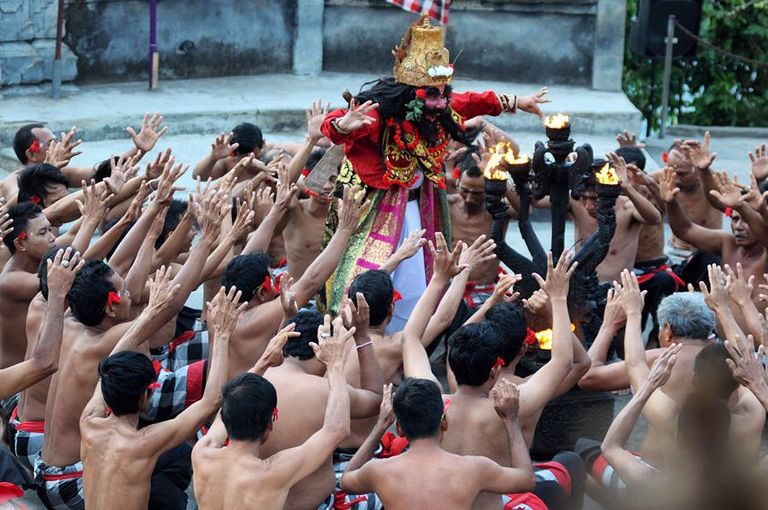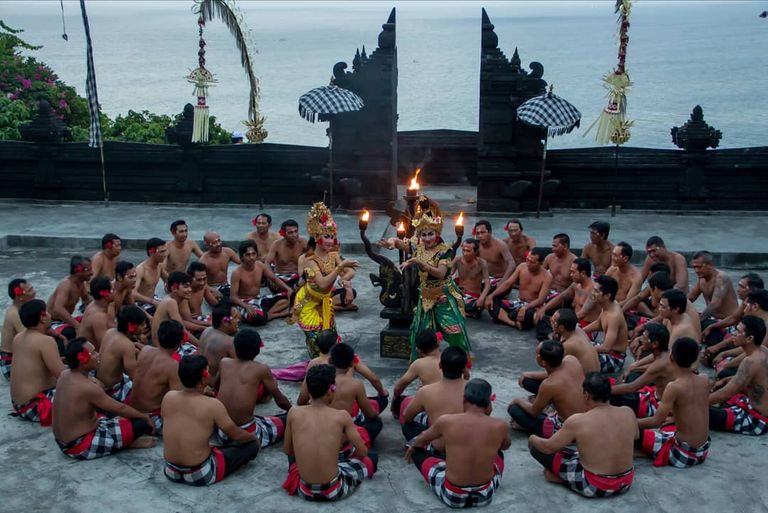
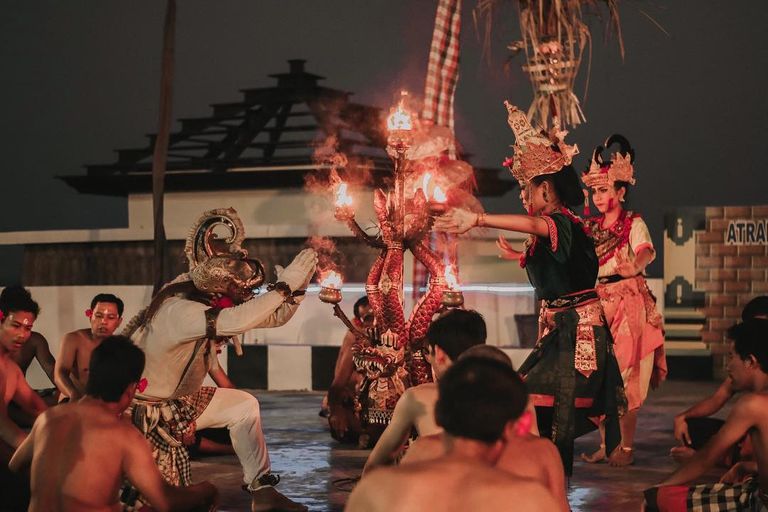
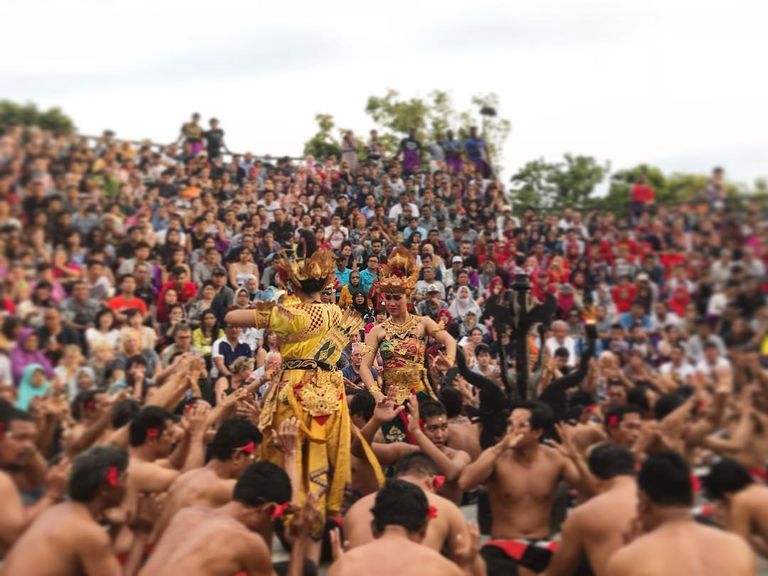
hello all friends, today I will again post about the arts in my area, tonight I will post about the beauty of the traditional Balinese dance, the Kecak dance.
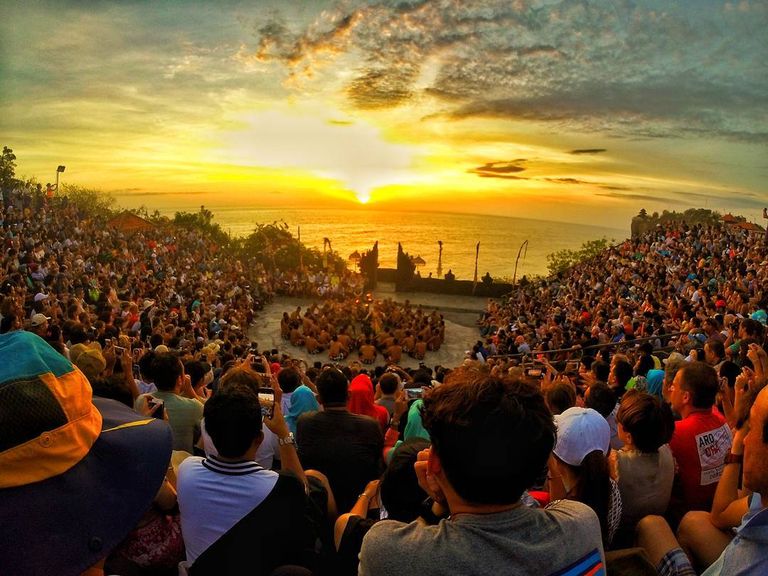
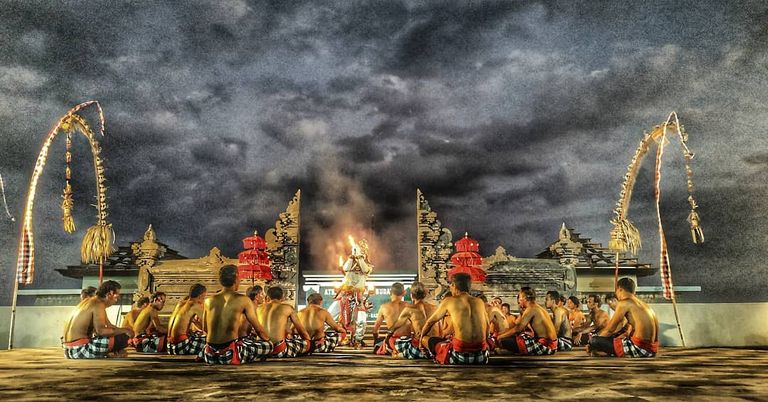
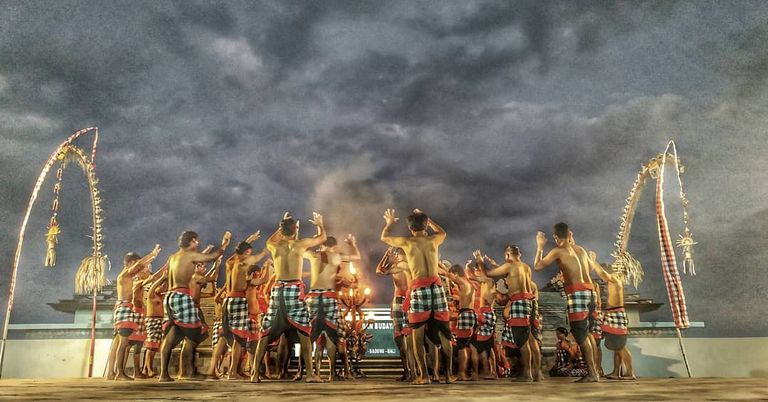
Kecak dance is one of the famous Indonesian dance arts originating from Bali. This dance is usually performed en masse by tens or even hundreds of male dancers sitting in a circular pattern.
It is called the Kecak dance, because when the rhythm of the music is played, the dancers will lift and move their arms while shouting the word "cak to cak to cak". The dancers will wear black and white checkered costumes, similar to a chessboard pattern.
History of Kecak Dance
German photographer Walter Spies and Dutch anthropologist who researched Balinese culture in his book "Overzicht van Dans en Toneel in Bali" mention that the history of Kecak dance was originally a male choir of the Sanghyang dance or sacred dance for ceremonial rituals in Bali.
This dance is performed only at certain times to ward off disease outbreaks. The sacredness of the dance makes people unable to perform it at any time. It is believed that if it is performed at any time the sacred value will weaken and the magical aura will disappear.
Ni Made Pira Erawati in her article Tourism and Creative Culture: A Study on Kecak Dance in Bali (2019) wrote that Walter Spies and dancer and dance researcher from England, Baryl de Zoete realized that foreigners who visited were very interested in witnessing sacred art as a characteristic or characteristic of the local community. Balinese ethnic identity.
Finally they teamed up with Balinese dancer Wayan Limbak from Banjar Bedulu, Gianyar, to package the male choir for the Sanghyang dance. The packaging of the male choir of the Sanghyang dance was modified into the Kecak dance which finally can be witnessed by tourists.
Initially, the Kecak dance included stories that were usually taken from the Ramayana epic, when Subali fought with his younger brother Sugriwa or Rahwana kidnapped Dewi Sinta.
In its development, the Kecak dance originating from Bali is offered with various choices, including the Kecak dance with the Mahabharata, Ramayana, Babad stories, and including Cak with a capacity of one hundred people, five hundred people and even up to a thousand people.
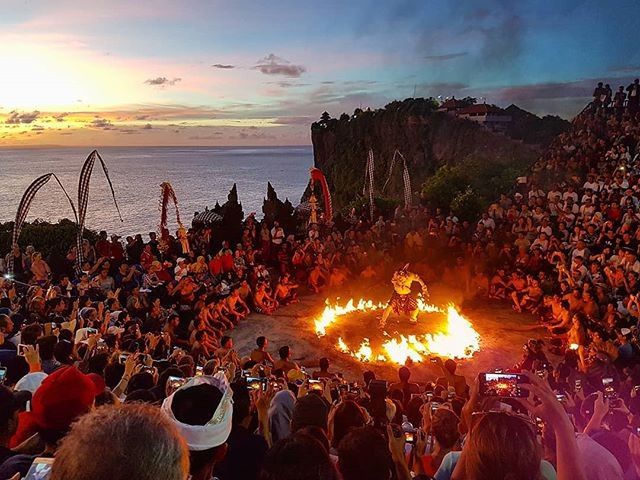

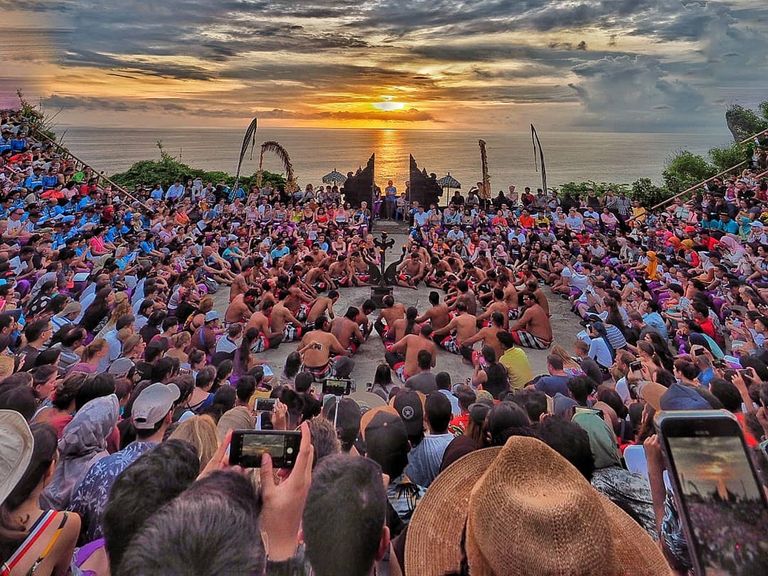
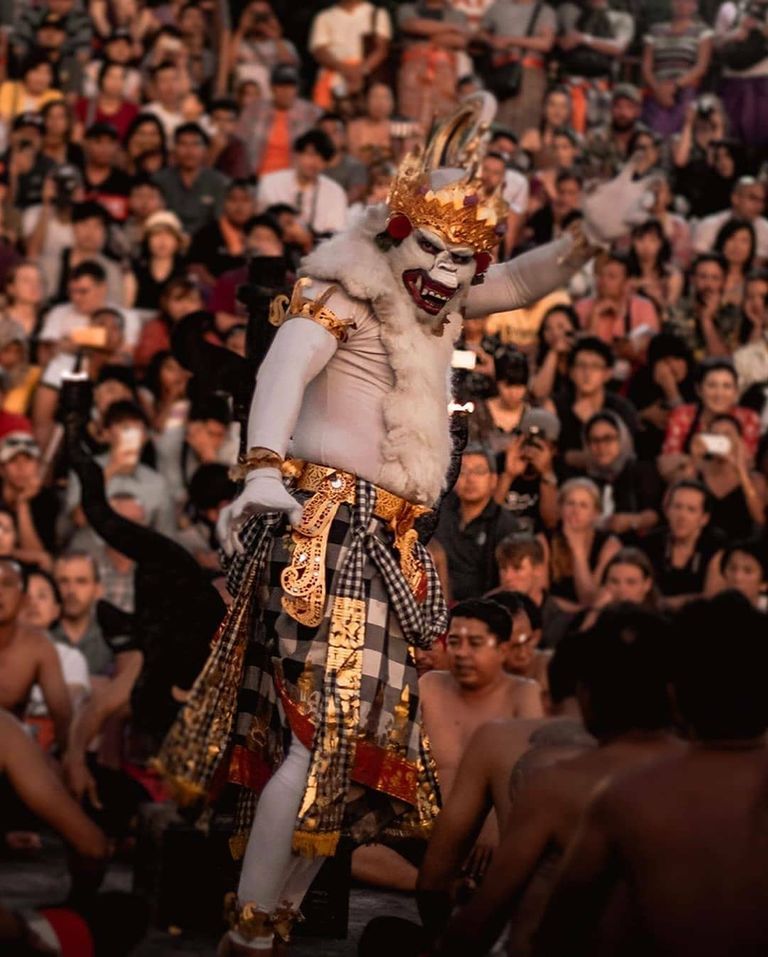
Kecak Dance Pattern
This art performance presents a dance as an introduction to the story, supported by music to accompany the movements of the dancers.
In Kecak dance performances, the sound of music is made a cappella resulting from the combination of the voices of "cak" dancers, usually around 50-70 people, as quoted from the book Diversity of Nusantara Dance by Resi Septiana Dewi, S.Pd.
One dancer will lead by giving the initial tone, then followed by a person who serves as a solo singer with a high or low tone pressure, and there is another person who is in charge of being a puppeteer to deliver the storyline. The Kecak dance prioritizes the storyline and the mix of voices.
Not only that because it includes the art of dance, this dance is also equipped with drama performances that play Ramayana characters. Quoting from the book entitled "The Traveler Note: Having Fun in Bali, Adventure in Lombok" by Rijal Fahmi Mohamadi, the Kecak dance performance itself is divided into four main scenes.
Scenes played in the Kecak dance include:
-Scene Rama, Sita (can also be spelled with Sinta), and the Golden Deer,
-Scene Sita, Ravana, and Garuda,
-Scene Twalen, Rama, Admiral, and Hanoman,
-Scene of Sita, Trijata and Hanoman.
Quoted from the art journal entitled Tourism and Creative Culture: A Study of Kecak Dance in Bali (2019) by Ni Made Pira Erawati, the Kecak dance originating from Bali as a result of creative culture is a collective creation involving new packaging techniques, social institutions, and other factors. -economic factors.
The new technique in question is how the Kecak dance is worked out into an art with local values, whose cultivation is carried out through the formation of voluntary social networks (volunteers), in maintaining culture, customs, and traditions that can represent the identity of Balinese art itself.
The government, and art schools there, even often hold special festival activities for the Kecak dance. The villages that work on the Kecak dance as a tourist offering include the villages of Bona, Blangsinga, Kemenuh, Bedulu, Singapadu, Batubulan in Gianyar, Kedaton, Sanur, Sumerta, Bualu in Denpasar, and other villages.
Now, this unique and entertaining dance can be found almost everywhere in Bali. The Kecak dance originating from Bali is also one of the global attractions for tourists visiting Bali, both local and foreign tourists.

